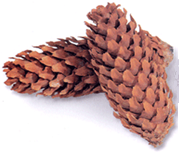Contact Dr. Merrin Macrae: mmacrae@uwaterloo.ca
Presentation Video:
Key Points:
What happens on the farm doesn’t always stay on the farm. Knowing what is leaving the farm, how it is leaving and when it is leaving will help us design better management practices. It is important to collect good quality data to be able to estimate how much water and P are leaving the fields and to identify when this is happening. We need to identify critical periods for P loss and work to improve our management so that we minimize losses during this periods.
(1) Runoff from Fields into Tributaries Can Change Seasonally
- Most flow and P loss occurs during the non-growing season (October-April), and especially during spring melt (generally March).
- This is a critical or peak period for runoff and P loss but we know very little about this period and have very little data collected in the winter months.
- Are BMPs working during this time? Management has been largely developed for summer months, but these practices need to be effective in winter months. Which BMPs are most effective for reducing winter losses?
These pictures show how things can change seasonally on the same field:
(2) How are Runoff and P Moving Off of Fields?
- We historically viewed surface runoff as the most important P source and ignored subsurface runoff because it was thought that soils “filter” P.
- Some researchers have shown that tiles can be important P sources, especially in regions that experience “preferential flow” from P-rich surface layers into tile drains. Clays that dry and shrink are especially vulnerable to this.
- Most of the studies that have shown large losses in tiles have been done in summer and are in clay soils. We need data collected over an entire annual cycle and in a range of soil types to truly understand what tiles are contributing.
- At our sites (silt loams), tiles contribute most flow, but surface runoff contributes the most dissolved P. The pathways contribute equal amounts of particulate P. Tile losses generally occur October through June whereas surface runoff losses are mainly in winter (thaw).
- Therefore, most flow is underground, but most P loss is above ground. Controlling P loss in surface runoff is very important – especially in winter!
- It is important to think about how fields are being left in the late fall as we move into winter.
- Management practices can have a big effect on whether or not tiles lose P.





